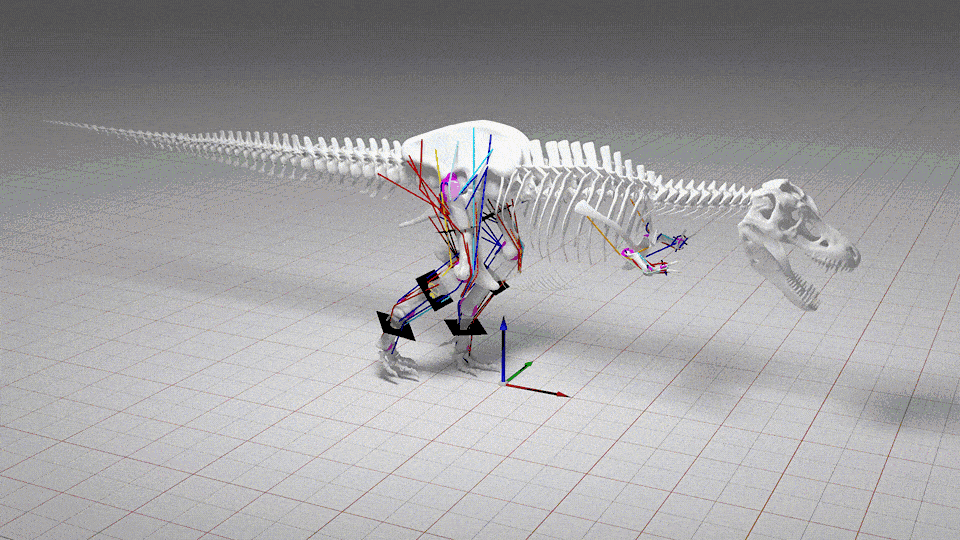When you purchase through links on our site , we may realise an affiliate commission . Here ’s how it works .
A Jurassic - age dinosaur walk on all four legs as a baby , but graduate to a two - legged stance as an adult .
The quadrupedal to bipedal switch made by thissauropodomorph — a type of herbivorous , long - necked and long - tailed dinosaur — seems to be unique among the animate being realm .

Notice how the dinosaur’s (Mussaurus patagonicus) center of mass changes as it grows older.
" We can not find any living animate being , besides human beings , that do a transition like this at all , " aver written report co - lead researcher Andrew Cuff , a post - doctoral investigator in biomechanics at the Royal Veterinary College ( RVC ) in the United Kingdom . [ photograph : See the Armored Dinosaur Named for Zuul from ' Ghostbusters ' ]
Researchers resolve this leggy mystery thanks to six well - preserve specimen of this dinosaur , known asMussaurus patagonicus , that spanned from infancy to maturity .
During its lifetime , about 200 million geezerhood ago , M. patagonicuslived in what is now Patagonia , in southern Argentina . Although the dinosaur weigh more than a short ton as an adult , the sauropodomorph was teeny as a sister — its skeletal remains can fit in a human ’s palms .

AMussaurus patagonicushatchling was so small that it fits in a person’s hands.
Curious about how this critter moved , scientist from Argentina ’s Museo de La Plata , the National Scientific and Technical Research Council in Argentina ( CONICET ) , and RVC team up to create 3D digital scans of the dinosaur ’s anatomy at different aliveness leg .
Then , the researchers figured out thedinosaur ’s massby reckon the potential exercising weight of its brawn and indulgent tissue . This data helped them to determine the creature ’s center of great deal at each age — that is , as a newly - hatched dinosaur , a 1 - year - old juvenile , and an 8 - year - old grownup .
M. patagonicus , the investigator found , in all likelihood walk on all quaternity as a infant because its center of mass ( also know as its balancing full point ) was so far forward . If it had only walked on its two hind legs , the dinosaur would have face - planted .

The remains of the dinosaurMussaurus patagonicusat different life stages.
" If you ca n’t get your foot underneath your center of mass , you ’re go to fall over , " Cuff articulate . " And so , it has to be compensating in a different way . Instead of just swear on its hind legs , it had to be using its foreleg to serve support its mass . "
However , this dinosaur did not crawl as a baby , assomeheadlineshavesuggested . " All of this stuff that you might see about it crawling is wrong , " Cuff said . " It ’s definitely walking around on four legs rather than crawling , like a human child might do . "
curtly after the dinosaur ’s first birthday , its nitty-gritty of mass shifted back toward its hips . So , it belike began walk on its two hind leg at this point , Cuff say . This center - of - tidy sum shift was largely driven by the outgrowth of the tool ’s tail as it grew older , said subject field co - lead research worker Alejandro Otero , a vertebrate paleontologist at the Museo de La Plata and a CONICET researcher .

" It is important to notice that such locomotor shift is rare in nature , " Otero state Live Science in an email . " The fact that we were able to recognise it in extinct forms , like dinosaurs , highlights the importance of our exciting determination . "
The survey was published online May 20 in the journalScientific Reports .
primitively published onLive scientific discipline .
















